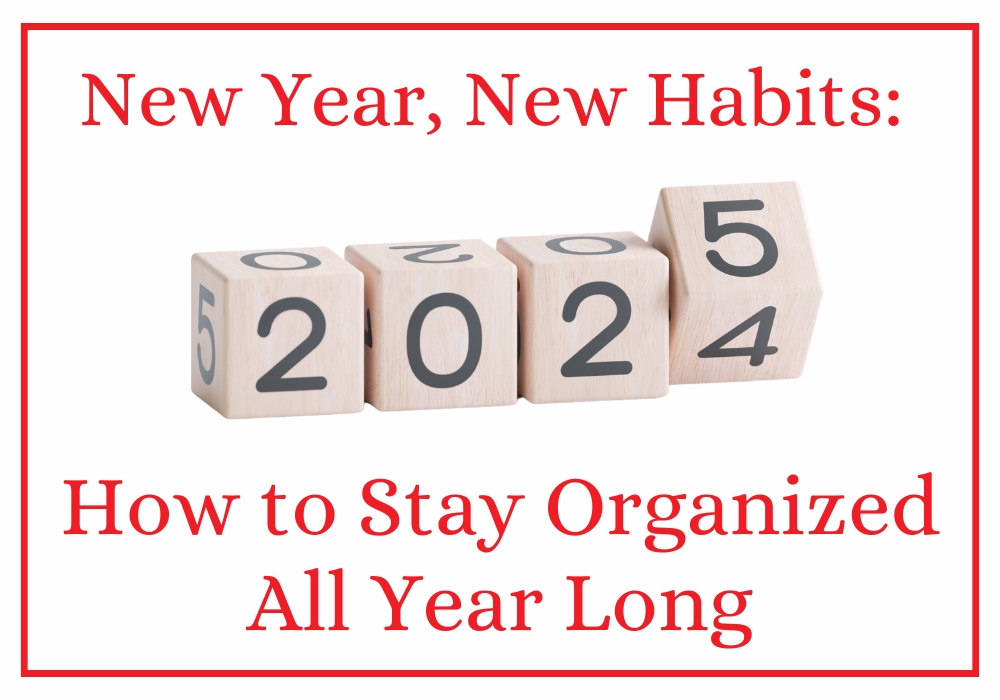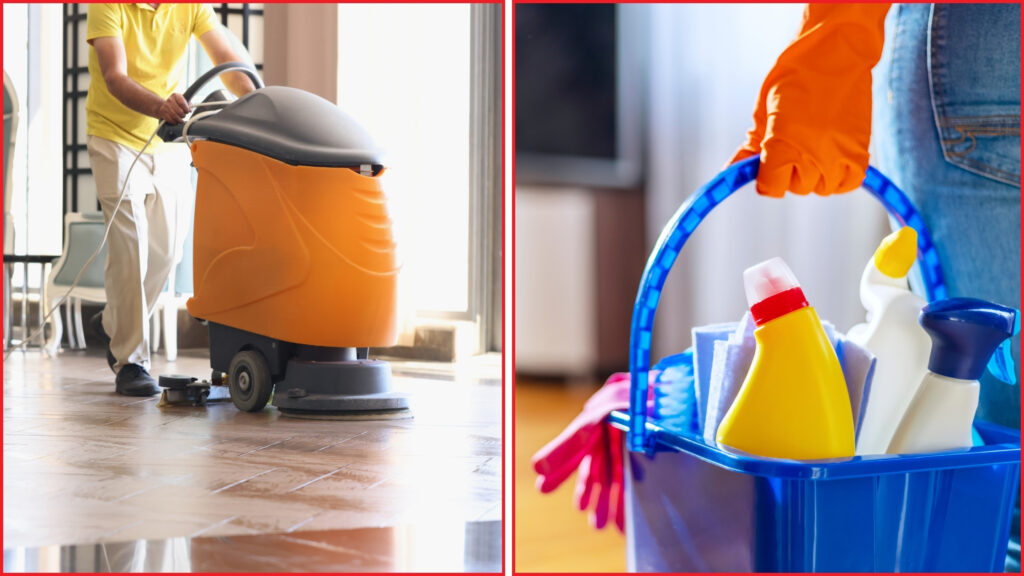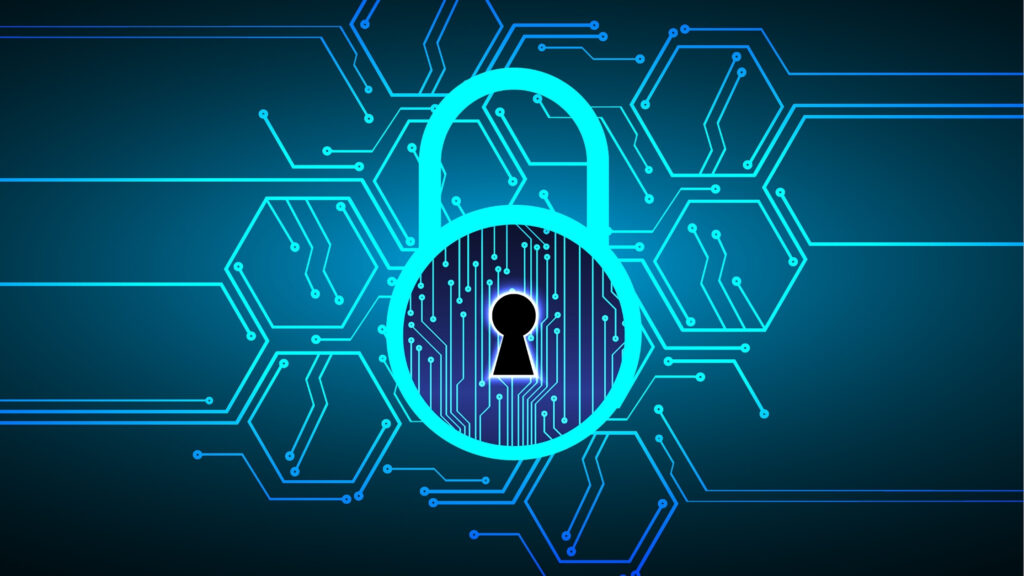New Year, New Habits: How to Stay Organized All Year Long

As the new year begins, it’s the perfect opportunity to adopt fresh habits that improve your life, especially your productivity and organization. With Home Office Safety and Security Week as a timely reminder, you can make your workspace both safe and efficient. Below are a few steps to be your guide to make organization easy for you all year long.
Declutter Your Space First
Start by assessing your workspace and identifying items you no longer use or need. Begin with one area, such as your desk or a drawer, and sort items into three categories: keep, donate, and discard. For example, old documents can be shredded or recycled. Consider donating office supplies, gadgets, or furniture in good condition. By adopting a sustainable approach, such as recycling paper and repurposing storage items, you contribute to a cleaner environment.
Set Specific Organizational Goals
Define clear objectives for your organization journey. Instead of vague goals like “organize the home office,” break them into smaller, actionable tasks such as “sort paperwork into labeled folders” or “rearrange shelves by category.” For digital organization, focus on specific areas like decluttering your email inbox or categorizing digital files into folders. Setting timelines for these goals ensures accountability. For instance, aim to organize your desk by the end of the week and tackle a different area each subsequent week.
Create a Daily Cleaning Routine

Consistency is key to maintaining organization. Dedicate 10-15 minutes every day to tidying up your space. This could include clearing your desk, wiping down surfaces, or putting away items after use. Make it a part of your morning or evening routine, depending on when you feel most productive. By addressing small messes daily, you can avoid the buildup of clutter and dirt that requires larger cleaning efforts. Use this time to also check for items that are out of place and return them to their designated spots.
Develop a Safe and Secure Home Office Setup
A secure home office enhances both safety and productivity. Start by organizing cables with zip ties or cord organizers to prevent tripping hazards. Install surge protectors to protect electronic devices from power surges. Ensure your Wi-Fi is secured with a strong password to prevent unauthorized access to sensitive information. Invest in fireproof storage boxes or filing cabinets with locks for important documents. Adequate lighting is another critical aspect; ensure your workspace is well-lit to reduce eye strain and accidents. Taking these precautions ensures a safe and functional work environment.
Label Everything

Labels are the unsung heroes of the organization. Use them for shelves, storage bins, and file folders to ensure everything has a designated place. For example, label one drawer for “stationery” and another for “tech accessories.” Color-coded labels can further streamline identification, especially in shared spaces. Digital labeling can also help organize files on your computer. A clear labeling system saves time, reduces frustration, and encourages everyone in the household or office to maintain order.
Adopt Digital Organization Tools

Transitioning to digital tools simplifies tracking and storing information. Apps like Trello, Asana, and Google Drive help manage tasks, deadlines, and documents. For example, create a Trello board with cards for each project, and assign deadlines to stay on track. Use cloud storage to organize digital files into folders by category, such as “work,” “personal,” and “archives.” Enable automatic backups to prevent data loss. Digital tools not only save physical space but also make your information accessible from anywhere, enhancing productivity.
Utilize Storage Solutions
Invest in versatile storage options to maximize your workspace’s potential. Stackable bins and vertical shelving units make the most of the limited floor space. Drawer dividers are ideal for organizing smaller items like pens, cables, and notepads. Clear storage containers allow you to see contents at a glance, saving time when searching for specific items. For bulkier items, under-desk storage or modular furniture with built-in storage can be great solutions. Efficient storage keeps your space tidy and functional.
Implement a “One In, One Out” Rule
To prevent clutter from creeping back, establish the habit of removing an old item whenever you introduce a new one. For example, if you buy a new book, donate one you’ve already read. This practice encourages mindful consumption and helps maintain a balance between acquiring new items and managing existing ones. Over time, it reinforces the importance of keeping only what’s necessary and meaningful.
Establish Weekly Organization Check-ins
Schedule a weekly review to assess your organizational systems and address any areas that need attention. For instance, take 15-30 minutes on Sunday evening to ensure your workspace is tidy, your planner is updated, and your files are in order. Use this time to identify any items that can be discarded or relocated. Weekly check-ins prevent small issues from escalating into larger problems, keeping your environment consistently organized.
Sort by Priority and Frequency of Use
Arrange items based on how often you use them. Keep daily essentials like pens, notebooks, and chargers within arm’s reach. Items used occasionally, such as reference books or spare cables, can be stored in less accessible spaces. For digital organization, prioritize frequently accessed files by keeping them on your desktop or in a dedicated folder. Sorting by frequency saves time and ensures your workspace remains efficient.
Focus on Digital Safety

Protect your digital assets by implementing cybersecurity measures. Regularly back up your files to cloud storage or an external drive. Use password managers to create and store strong, unique passwords for each account. Enable two-factor authentication (2FA) for added security. Keep your software and antivirus programs updated to protect against threats. A secure digital workspace minimizes the risk of data breaches and ensures peace of mind.
Minimize Distractions
Create distinct zones for work and relaxation to maintain focus. Keep personal items like magazines, snacks, or unrelated gadgets out of your workspace. Noise-canceling headphones or a white noise machine can help reduce auditory distractions. By eliminating potential interruptions, you can maintain a productive and concentrated workflow.
Use a Physical or Digital Planner

Planners are essential for staying organized. A physical planner allows you to jot down tasks and appointments quickly, while digital planners offer features like reminders and syncing across devices. Choose a system that works best for you. Regularly update your planner to reflect completed tasks, rescheduled meetings, or new priorities. A well-maintained planner keeps your schedule on track and reduces stress.
Practice Minimalism
Adopting a minimalist approach simplifies organization. Focus on owning fewer, high-quality items rather than an abundance of unnecessary possessions. Regularly evaluate your belongings and ask yourself if each item serves a purpose or brings value. Minimalism not only reduces clutter but also encourages mindful living, making it easier to maintain a clean and organized space.
Get Everyone Involved

If you share your home or workspace, encourage family members or colleagues to participate in organizing efforts. Assign tasks to each person, such as organizing a specific room or sorting shared supplies. Collaborative efforts ensure that everyone contributes to maintaining a tidy environment, reducing the burden on any one individual.
Celebrate Small Wins

Acknowledge and reward yourself for achieving organizational milestones. Whether it’s decluttering a single drawer or completing a week of consistent cleaning, take time to appreciate your progress. Rewards could be as simple as enjoying a favorite snack, watching a movie, or treating yourself to a small gift. Celebrating successes keeps you motivated and reinforces positive habits.
Cleaning and Organizing Habits to Start in the New Year – Summarized
- Declutter one room at a time to avoid burnout.
- Establish a “clean as you go” habit, wiping surfaces immediately after use.
- Empty trash bins daily to maintain hygiene.
- Regularly sanitize your keyboard, mouse, and desk.
- Schedule monthly deep cleans for overlooked areas like vents or behind furniture.
- Donate unused items to keep your home organized and help others.
DIY Organization vs. Professional Organization Services

| Aspect | DIY Organization | Professional Organization Services |
| Time Investment | May take longer, especially for large projects | Quick and efficient with expert handling |
| Expertise | Relies on personal knowledge and research | Comes with trained professionals and experience |
| Customization | Fully customizable to your preferences | Tailored recommendations based on expertise |
| Stress Level | Can be overwhelming without guidance | Reduces stress by delegating tasks to professionals |
| Learning Opportunity | Helps you develop personal organization skills | Provides insights and techniques during the process |
| Flexibility | Work at your own pace | Follows a predefined schedule |
| Result Quality | Varies based on effort and skill level | High-quality and polished results |
| Access to Resources | Limited to what you can purchase or repurpose | Access to specialized tools, materials, and systems |
| Longevity of Results | Depends on personal upkeep | Comes with professional systems for sustainability |
FAQs About Staying Organized
Q: How do I stay consistent with organizing habits?
A: Use reminders, set specific goals, and reward yourself for achievements.
Q: What’s the first step to getting organized?
A: Start by decluttering. Remove items you don’t need before organizing what’s left.
Q: How can I maintain digital organization?
A: Regularly back up your files, use folder systems, and secure your accounts with strong passwords.
Q: What tools can help with organization?
A: Apps like Evernote, Google Drive, and task planners are excellent for staying organized.
Q: How often should I reorganize my workspace?
A: Schedule weekly check-ins to ensure your systems are working and make adjustments as needed.
Q: Can I combine digital and physical organization methods?
A: Yes! Use physical tools like planners for daily tasks and digital systems for long-term tracking.
Q: How can I involve my family in organizing?
A: Turn it into a collaborative activity by assigning tasks and rewarding contributions.
Q: What’s the easiest habit to start?
A: Begin with cleaning as you go—it’s simple and highly effective.
Q: How do I manage paper clutter?
A: Digitize documents whenever possible and use filing systems for essential hard copies.
Why is Home Office Safety and Security Week important?
A: It highlights the need for secure and organized workspaces, especially for remote workers.
Conclusion
Starting the year with strong organizational habits sets the tone for success. Whether decluttering your workspace, implementing digital tools, or focusing on safety, these tips will help you stay organized and secure throughout the year. As we celebrate Home Office Safety and Security Week, let’s prioritize creating environments that are not only productive but also safe for everyone